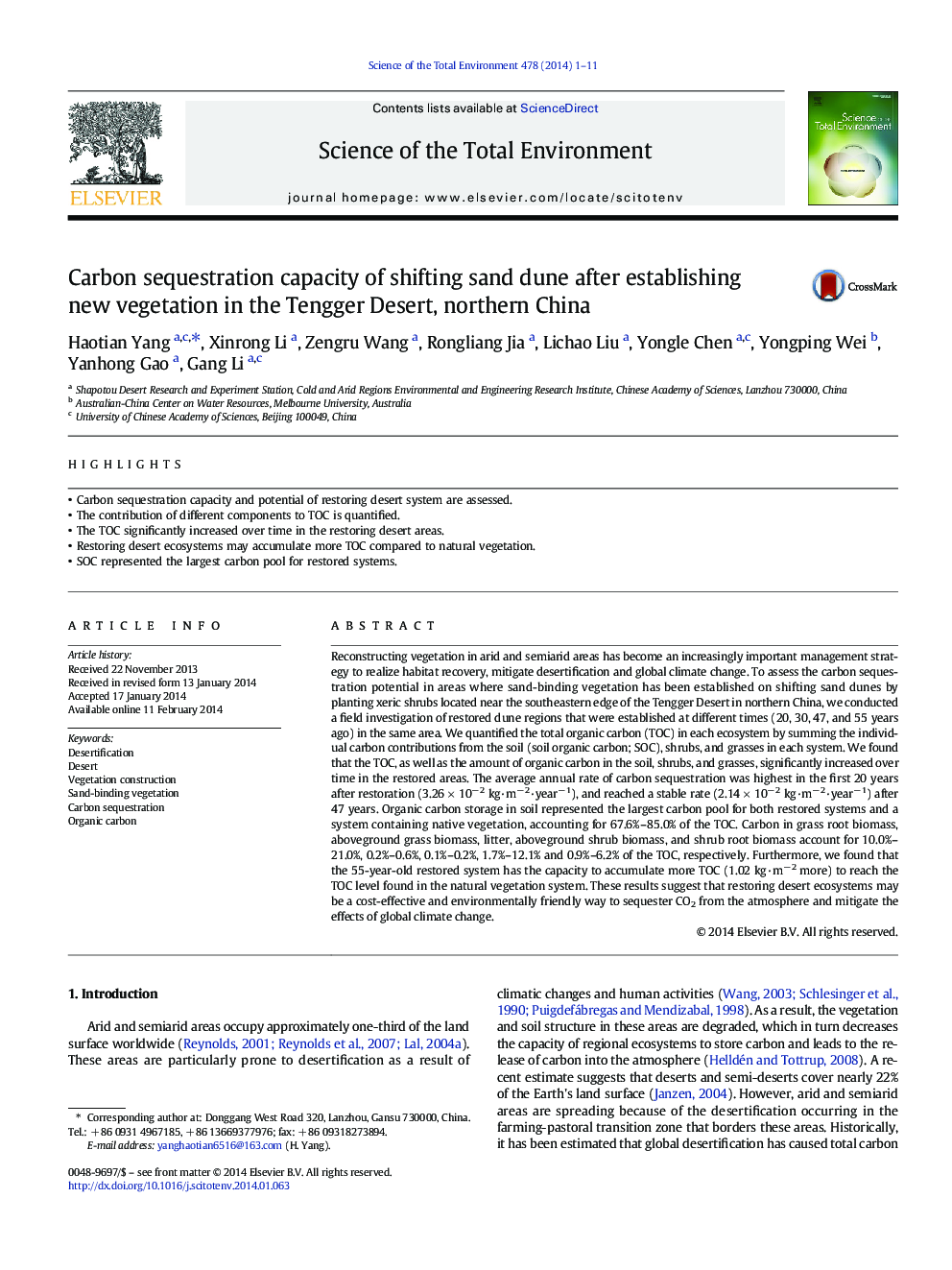| Article ID | Journal | Published Year | Pages | File Type |
|---|---|---|---|---|
| 4428486 | Science of The Total Environment | 2014 | 11 Pages |
•Carbon sequestration capacity and potential of restoring desert system are assessed.•The contribution of different components to TOC is quantified.•The TOC significantly increased over time in the restoring desert areas.•Restoring desert ecosystems may accumulate more TOC compared to natural vegetation.•SOC represented the largest carbon pool for restored systems.
Reconstructing vegetation in arid and semiarid areas has become an increasingly important management strategy to realize habitat recovery, mitigate desertification and global climate change. To assess the carbon sequestration potential in areas where sand-binding vegetation has been established on shifting sand dunes by planting xeric shrubs located near the southeastern edge of the Tengger Desert in northern China, we conducted a field investigation of restored dune regions that were established at different times (20, 30, 47, and 55 years ago) in the same area. We quantified the total organic carbon (TOC) in each ecosystem by summing the individual carbon contributions from the soil (soil organic carbon; SOC), shrubs, and grasses in each system. We found that the TOC, as well as the amount of organic carbon in the soil, shrubs, and grasses, significantly increased over time in the restored areas. The average annual rate of carbon sequestration was highest in the first 20 years after restoration (3.26 × 10− 2 kg·m− 2·year− 1), and reached a stable rate (2.14 × 10− 2 kg·m− 2·year− 1) after 47 years. Organic carbon storage in soil represented the largest carbon pool for both restored systems and a system containing native vegetation, accounting for 67.6%–85.0% of the TOC. Carbon in grass root biomass, aboveground grass biomass, litter, aboveground shrub biomass, and shrub root biomass account for 10.0%–21.0%, 0.2%–0.6%, 0.1%–0.2%, 1.7%–12.1% and 0.9%–6.2% of the TOC, respectively. Furthermore, we found that the 55-year-old restored system has the capacity to accumulate more TOC (1.02 kg·m− 2 more) to reach the TOC level found in the natural vegetation system. These results suggest that restoring desert ecosystems may be a cost-effective and environmentally friendly way to sequester CO2 from the atmosphere and mitigate the effects of global climate change.
